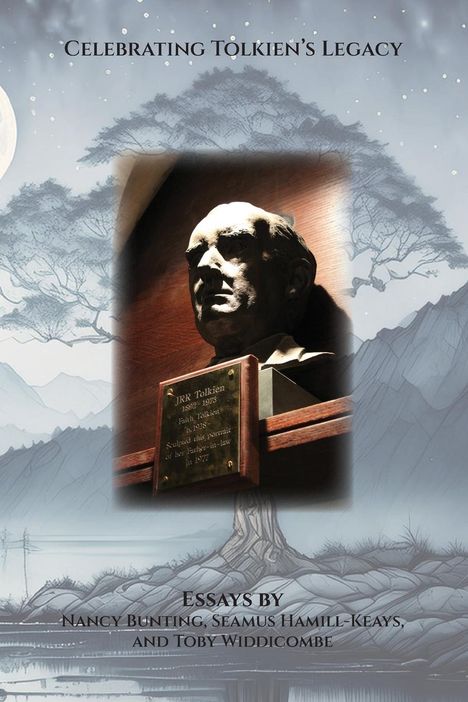Nancy Bunting: Celebrating Tolkien's Legacy, Kartoniert / Broschiert
Celebrating Tolkien's Legacy
- Essays by Nancy Bunting, Seamus Hamill-Keays, and Toby Widdicombe
(soweit verfügbar beim Lieferanten)
- Verlag:
- Walking Tree Publishers, 09/2024
- Einband:
- Kartoniert / Broschiert, Paperback
- Sprache:
- Englisch
- ISBN-13:
- 9783905703528
- Artikelnummer:
- 11982723
- Umfang:
- 374 Seiten
- Gewicht:
- 567 g
- Maße:
- 234 x 156 mm
- Stärke:
- 20 mm
- Erscheinungstermin:
- 30.9.2024
- Hinweis
-
Achtung: Artikel ist nicht in deutscher Sprache!
Klappentext
It has been just over fifty years since the death of J. R.R. Tolkien. This collection of essays by Nancy Bunting, Seamus Hamill-Keays, and Toby Widdicombe celebrates his achievement by looking at two aspects of the legacy of the founder of modern fantasy. First, Tolkien's own history in relation to his fiction and, second, the likely future direction of Tolkien studies. It reassesses his achievement; suggests some fruitful ways forward in scholarship; and examines the complex history of Tolkien's relation to the genres of fiction and epic. The first section, "Biographical Explorations," focuses on the milieu in which Tolkien grew up. It consists of seven essays. The first essay looks at the importance of a likely 1904 excursion by the Tolkien brothers to Kinver. The second discusses the parallels between Queen Victoria's Diamond Jubilee and Tolkien's description of Bilbo Baggins's "long-expected" party in The Lord of the Rings. The third introduces the life of Tolkien's aunt, Edith Mary "May" Incledon (née Suffield), immortalized as one of the "three remarkable daughters of the Old Took" in The Hobbit. The fourth argues for an important connection between Tolkien's having been ambidextrous and his distinctive imagination and rare command of languages. The next essay looks at how attempts to document Tolkien's life have run an obstacle course beginning with Tolkien's own attitude to biography. The Tolkien family and the unstinting efforts to guard their father's extraordinary achievement complicate the situation. The essay then offers possible remedies for the accidents of history and circumstance that have so far dominated how Tolkien is remembered. Chapter Six homes in on the last year in the life of Tolkien's mother, Mabel Tolkien. The last chapter in the first section offers a deeply biographical interpretation of "Smith of Wootton Major." People important to Tolkien's life appear in the story along with those lifelong themes of exile and loss, but these latter appear without the blessing of eucatastrophe. The second, "New Directions," consists of two essays. The first proposes, first, that in the process of developing his mythology, Tolkien created a number of pocket eutopias and dystopias-communities of betterment or deterioration--within a larger, even epic, landscape. It then goes on to argue that such a utopian vision can be traced throughout the sixty-year life of the legendarium. The second ponders how Christopher Tolkien, the literary executor of his father's estate, was caught among the conflicting demands and duties of editor, guardian of his father's reputation, and custodian of his family's estate. The essay chronologically traces Christopher's changing editorial choices and the results of those choices that have produced a range of problems-not the least of these being the Tolkien Estate's tight control over the scholarly study and publication of Tolkien's Middle-earth manuscripts. This control is something about which most Tolkien readers are likely wholly unaware. This collection of essays comes at an important time. With the death of Priscilla Tolkien in 2022, all of Tolkien's children have passed on. Scholars now have an opportunity to recast discussion of Tolkien's achievement in a new era even as they are aware of how much that achievement must be viewed in light of its increasingly obvious and increasingly inaccurate cinematic and televisual re-presentation. Primacy should necessarily belong to Tolkien's written achievement and, hence, to the sort of scholarship this celebratory collection represents.

